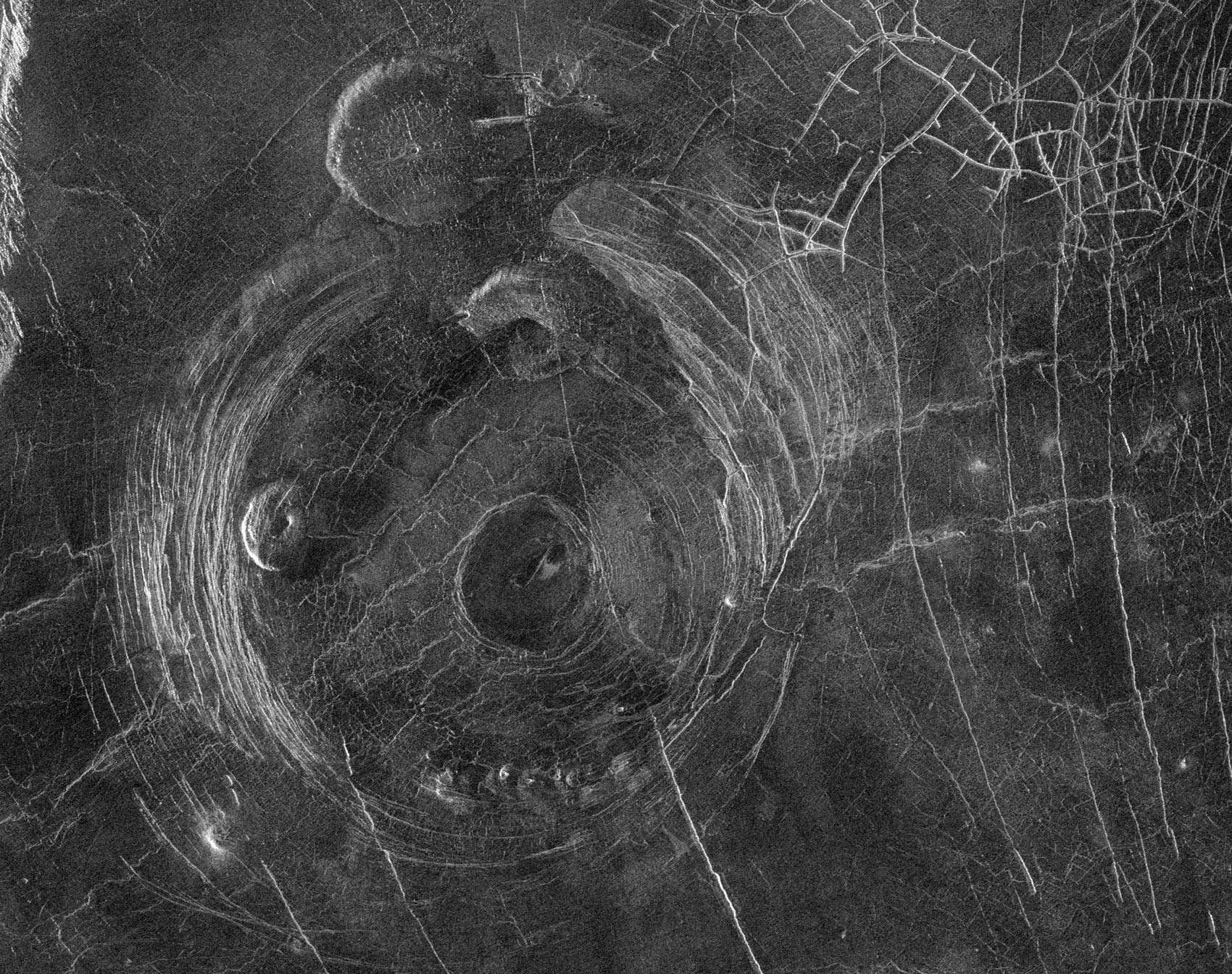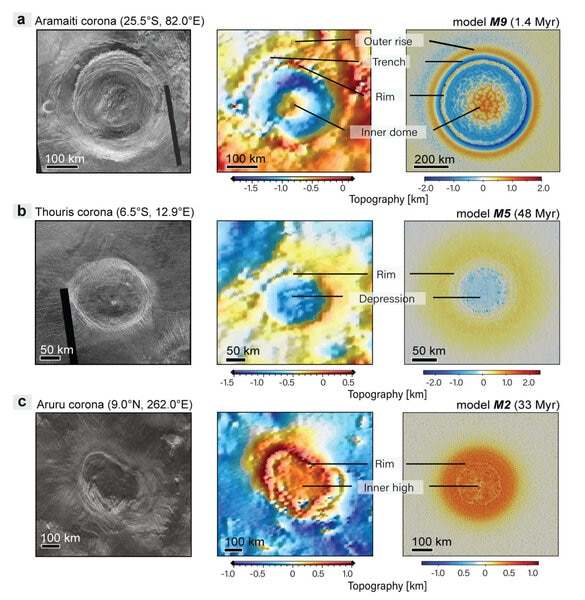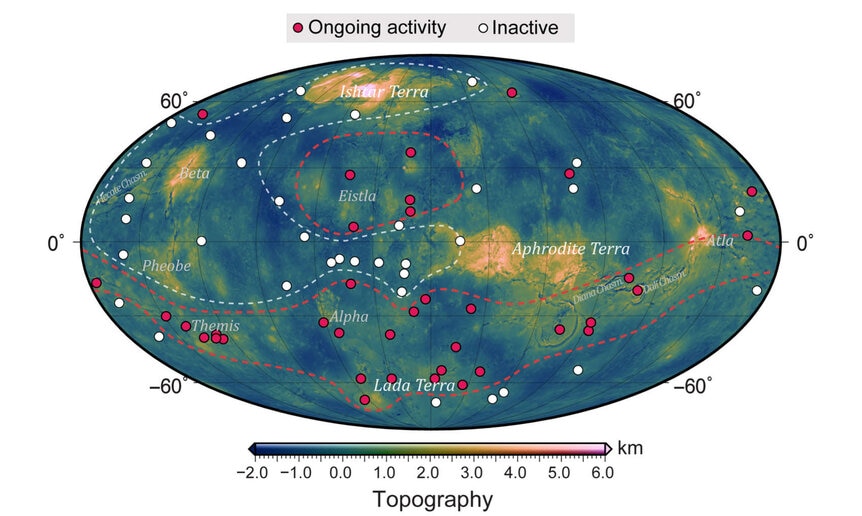Create a free profile to get unlimited access to exclusive videos, sweepstakes, and more!
New research shows Venus is still geologically active now, *today*

For a while now evidence has been mounting that Venus is currently geologically active. For example, the volcano Idunn Mons has a peak that's hotter than its surroundings, implying there may be magma inside it. There may be recent lava flows on the surface, and several hot spots have been detected, too.
And now new research once again supports this idea. It's not saying that volcanoes are belching out lava and noxious gases (like Venus needs any more of those), but instead that huge upwellings of magma from the planet's mantle are still shaping the surface, possibly even now, today. At the very least it's been in the very recent past… and it may help explain the puzzling aspect of Venus's surface looking very young.
The work looked at features all over the surface of Venus called coronae. These are odd circular or oval-shaped formations, clearly having to do with some sort of volcanic activity. They range in size from 60 kilometers across to a whopping 3500 kilometers wide; that one, called Artemis Corona, would stretch almost all the way from Denver to Washington, DC.
Coronae come in a bewildering variety of shapes, sizes, and specific features. Some have radial cracks inside them, others concentric cracks around them. Some have domes in the middle while others have depressions. Some have complicated troughs and ridges around their exterior, others do not. Understanding them is difficult.
There are many ideas as to what causes coronae, but the most likely is that they're deformations in the crust of Venus from mantle plumes, rising rivers of mantle material, heated from below (probably near the mantle/core boundary) which causes the material to move upwards. These plumes then hit the crust, which softens it and pushes it upward.
The new work investigates these plumes and their impact on the crust numerically, using physical models of the plumes, mantle, and crust, and then applying physics to see what happens over time. By varying the inputs (plume density and temperature, crust thickness and strength) they can attempt to see if they can mimic the various features seen in coronae.
The results are compelling: Their models do in fact seem to replicate a lot of the baffling structures seen.
The overall story is that a plume rises from the mantle and impinges on the crust from below. This forces the crust upward, forming a dome. The colder, denser crust material then gets pushed away, forming a circular region around the plume impact point as well as a trough and rim around the outside, like cheese slides away from the center of a pizza due to a bubble in the dough. The mantle plume then spreads out, deepening the trough, and the dome may start to deflate as pressure under it subsides. As the plume finally dies away the dome can collapse, forming a depression, and the trench inverts, becoming a rim.
But that's the general picture. Details change as they changed the inputs. If the crust is thin the magma can punch through. If the plume is weaker and crust thicker, a small dome can form but no rim or trough. In other words, different conditions generate different coronae, just as seen on the actual surface.
They were able to replicate quite a few actual coronae with their models, which is good: You want to be able to show that the model represent actual features.
But it gets better: They were able to show that different coronae were not just from different conditions under the surface, but also were due to different ages. Some features are old and obviously inactive, dead. But they also found 37 coronae they identified as "active," meaning they show features indicating extremely recent activity.
The question is, how recent? That's the fun part: The activity may be ongoing. Some of the features are what you expect to see from coronae still in the process of formation, so we're talking now.
That's extremely cool. It also may solve a thorny problem. The surface of Venus is very odd, in that globally it appears very young. No features are seen older than about 500–700 million years. One way this might be possible is that some huge global eruptive event completely resurfaced the entire planet around that time, wiping out older features.
That's downright apocalyptic. It's also hard to support; it's difficult to find a way it could happen. But these new results show that the mantle plumes are occurring all over Venus, and can be pretty large in extent. They take a few tens of millions of years to go from start to finish, so it's possible that the plumes resurfaced the planet regionally, piece by piece. After some hundreds of millions of years the entire surface gets repaved, explaining what we see now.
What's needed next are higher resolution maps of the surface of Venus; the ones we have now are good but lack the detail necessary to truly understand the plumes' effects when making the coronae. Some missions are being planned. NASA doesn't have any under development (just some proposed, including a wind-powered rover), but Russia and India are both working on orbiters, including a lander for Russia and a balloon for India. Ambitious, and very interesting.
We need to take a closer look at this hell next door. There but for the grace of geology go we, and it would be nice to see why Venus and Earth took such divergent paths.






























